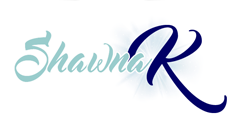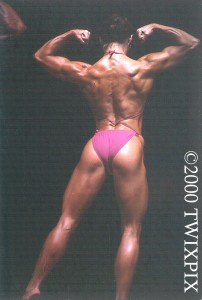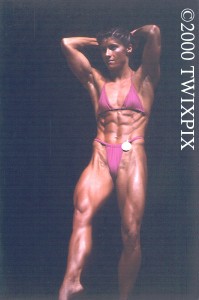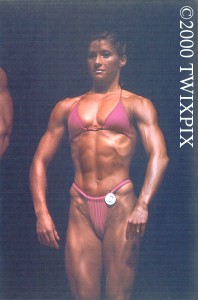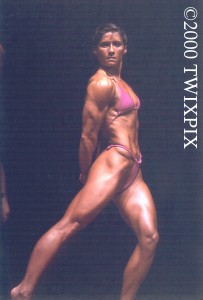Do you want a real challenge? Have you ever thought of doing a fitness or figure show? I’m not telling you that this is something you SHOULD do, but I AM saying that you’ll learn more about your body and yourself by doing so.
A word of advice: if you’re just starting out with resistance or weight training, don’t consider a physique contest off the bat. There’s nothing worse than seeing someone on stage that just shouldn’t be there. Consider a physique type contest very carefully. If you have a friend in the world, hopefully they’ll step up and tell you if you’re not ready for a contest if the mirror is fooling you.
Let me tell you about my experience…
I was a competitive swimmer for 12 years and reached national caliber. I did freestyle skiing for a couple years and competed at a national level there too. I had a history of competitiveness so when I hit the gym in earnest once I didn’t have a traditional sport to compete, it made sense to do a bodybuilding contest.
Bodybuilding was a little more than I expected. There was the physical training for the contest that loomed and there was the grueling nutrition program required to be in tip top shape to stand on stage.
Many people think that training for a bodybuilding contest is unique and different than regular weight training. I’m here to say that my training in the gym isn’t a whole lot different now than when I was training for a contest. Then again, I tend to be a little over the top where my training is concerned. I’m very dedicated and rarely miss a day.
Yes, back then I did body part training in an effort to balance my physique before a contest, but I continue to do body part training with an emphasis on large muscle groups. I’ve never spent hours just training one body part, like my biceps, I’ve worked hard at developing my arms through heavy back, chest and shoulder training. All the small body parts get trained as a result of compound training.
The biggest difference in my training now compared to my competitive days is mostly diet related and a reduction in my cardio. I’ll go into both those things in future blog posts.
First, let’s look at my weight training.
I used a push/legs/pull breakdown. What I mean by this is that on day one, I’d do exercises for all the pushing muscles (chest, shoulders and triceps). On day two, I’d train legs. Then on day three I’d work on pulling muscles (back and biceps). Day four would be a rest from weights, but not cardio, and then I’d start all over again, this way I didn’t train a certain body part on a particular day of the week, it was always changing.
I never did the same workout twice, and still don’t. I always change up one aspect. For example, a workout can be completely different if you change rest intervals, rep schemes, order of exercises, number of sets, etc. The variety of ways to change up a workout is only limited by your imagination and I can always find a way to change up a routine. (Remember, you’re talking to a woman that for 12 years of my life swam back and forth in a pool, for hours on end finding subtle differences in workout design.)
I’ll show you a few samples of my routines. Like I said, these were constantly changing. I would finish a workout in less than 45 minutes, no chit chat, I just went hard and tried to keep the weights as heavy as possible WITH GOOD FORM. I’m a real stickler for form to ensure that I’m training the body part intended and to reduce the risk of injury.
Chest/Shoulder/Tricep Workout #1
Bench press to push ups 4 sets – I kept my reps on the bench between 8-10, so I kept the weight as heavy as I could, then I went directly to push ups to failure. Maximum 1 min between sets.
Incline DB fly 4 sets – again kept the rep range between 8-10, 30 seconds rest between sets
DB lateral raise to DB shoulder press 4 sets – rep range 8-10, 30 seconds rest between sets
Tricep extensions to dips 4 sets – 8 -12 rep range, 30 seconds rest between sets
Abs – I always finished with 5-10 min of abs: planking, curls, ball work
Chest/Shoulder/Tricep Workout #2
Incline DB fly 4 sets – 8-10 rep range, 30 seconds rest between sets
Push up to bench press 4 sets – I kept my reps on the bench between 8-10, so I kept the weight as heavy as I could, then I went directly to push ups to failure. Maximum 1 min between sets.
BB shoulder press 3 sets – 8-10 rep range, 30 sec rest between sets
DB lateral raise to DB tricep overhead press 3 sets – 8-10 rep range, 30 sec rest between sets
Tricep cable extensions 3 sets – 8-10 rep range, 30 sec rest between sets
Leg Workout #1
Squat ‘down the rack’ 3 sets – I would choose 3 different weights that I could get about 8-10 reps with. I would start with the heaviest weight, so 10 reps, strip some weight and do 10 reps again, strip the weight and finish with another 10 reps. Eg. 135 x 10 reps, 115 x 10 reps, 95 x 10 reps. Rest 2 min and repeat the whole set two more times.
Extensions to hamstring curls 3 sets – 10-15 rep range, go directly from one exercise to the other, 30 seconds rest between sets
Barbell lunges 3 sets – 10-15/leg rep range, 1 min between sets
Calf raises on leg press to ab move 4 sets– 20-30 rep range for calves and then a hard set of hanging leg raises, bicycle crunches, plank etc to failure. No rest between sets here.
Leg Workout #2
Leg press 4 sets – 10-15 rep range, 1 min between sets
Extensions to squats 3 sets – 10-15 rep range on each, 1 min between sets
Hamstring curls to BB lunge 3 sets – 10-15 rep range on each, 1 min between sets
Calf raises on leg press to ab move 4 sets– 20-30 rep range for calves and then a hard set of hanging leg raises, bicycle crunches, plank etc to failure. No rest between sets here.
*Generally I found leg days to be the most grueling and nauseating. I loved (and still do) training legs!
Back/bicep Workout #1
Cable rows ‘down the rack’ 5 sets – I’d do 8-10 reps of a heavy weight and then pull the pin for one drop (so each set was actually a double set, for example I’d do 10 reps with 120 lbs and then go directly to 100 lbs for 10 reps), 1 min rest between sets
Pull ups 3 sets – 10-12 rep range (I’d do assisted if I couldn’t do all the reps), 30 sec rest between sets
DB row 3 sets – 8-10 range, 30 sec rest between sets
BB curls to ab move 4 sets – 8-10 rep range on the bicep curls and then I’d go to failure on the ab move like a hanging leg raise, plank, side plank, etc
Back/bicep Workout #2
BB deadlifts 4 sets – 8-10 rep range, 1 min between sets
Cable row to pull ups 4 sets – 8-10 rep range on both, 30 sec between sets
DB row to bicep curl 3 sets – 8-10 rep range each side no rest
Abs– I always finished with 5-10 min of abs: planking, curls, ball work
I generally trained first thing in the morning. I’d get up, have a coffee and hit the gym. I was a teacher back then, so really had a 9-5 type job schedule. After my morning workout, I’d head home to get ready for school, walk my dogs and get on with my day. I was an anomaly in the bodybulding world in that I had a regular job outside the gym culture. At the higher levels of competition, I found that many competitors worked as a trainer in a gym, manager at a gym, juice bar attendant at a gym, you get the picture. I’m just saying that my lifestyle was very different than my colleagues at work.
If you’re considering a physique contest, here are a few things you need to consider:
· Do you have enough muscle on your frame so that once you lose some body fat, you won’t look like a rake? A good way to determine this is that you should have visible muscularity BEFORE you start a contest prep diet (diet to follow).
· Do you have the time and energy to prepare for a contest? You should allow yourself time for daily workouts and a minimum of two additional short burst cardio sessions daily 6-7 days per week.
· Do you have the resources to prepare for a contest? This is a fairly expensive endeavor. Aside from the time you need to train daily, you’ll need to fork over $$ for special food, tanning, posing suit, travel to the contest etc. It can turn into an expensive hobby, don’t ever think for a second that this $ will be recovered financially, but it will be an interesting educational experience.
· Do you have the support of loved ones? This is extremely important as you will be target locked on the date of your contest for a minimum of 12-16 weeks. If you spouse or significant other is not onboard, prepare for a rocky road and difficult times. Contest prepping is a difficult lifestyle to maintain at the best of times and if you’re encountering resistance from those around you it will be harder to stay the course.
· Have you attended an event? Can you imagine yourself on stage?
If you can say ‘yes’ to all the above, then maybe a physique contest is for you.
Like I said, bodybuilding or physique contests are NOT for everyone, but they can be a ton of fun. Honestly, it’s not something that I’d ever pursue in my future, but I’m grateful for having done them in the past. The experience helps me help others and I learned so much about myself. Not just about my physique and how it reacts to training and diet, but also about my mental resolve. This second aspect of physique training is one that surprises most and often is the factor that separates the men from the boys, or the women from the girls in this case!
